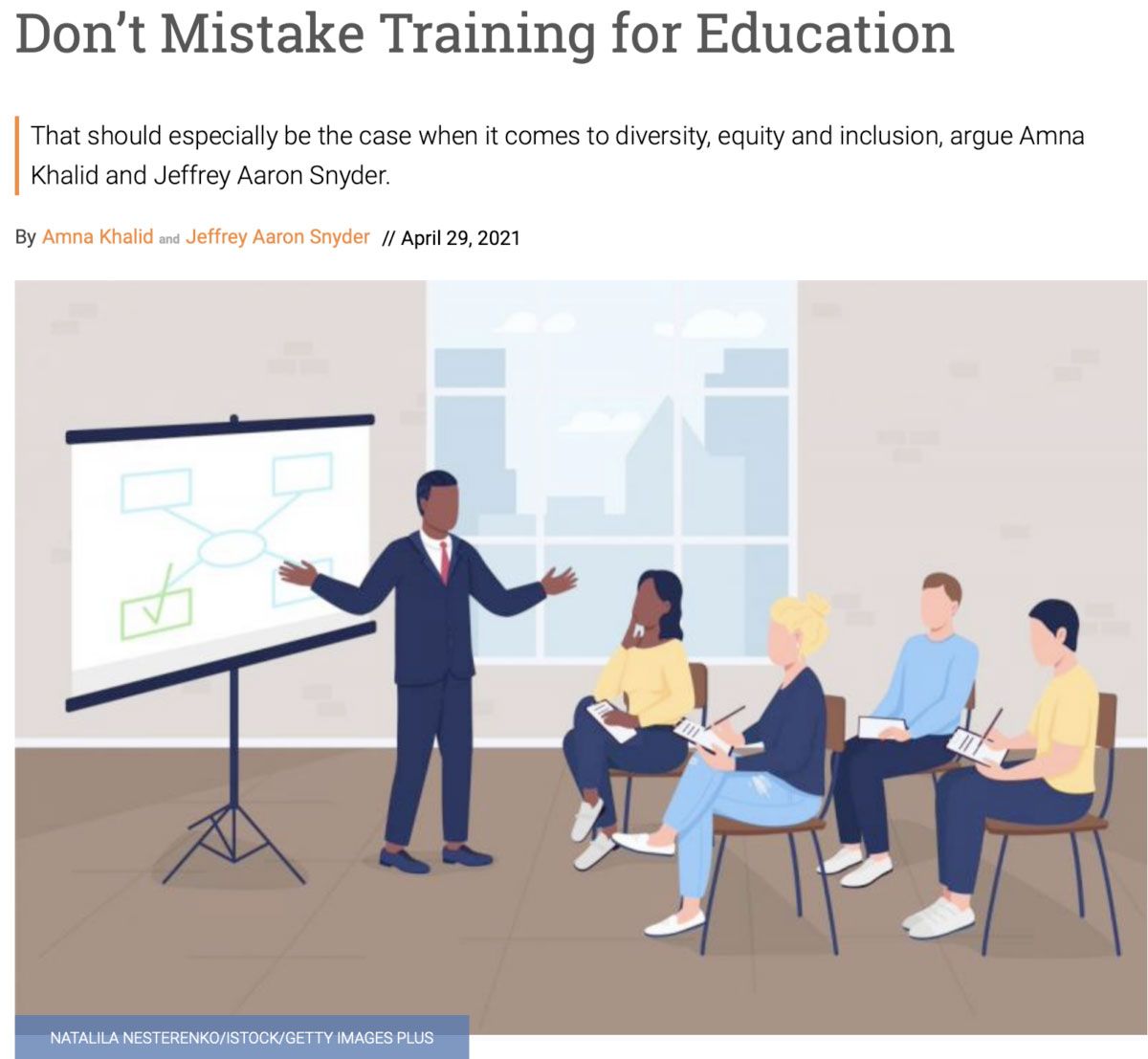Training is a Terrible Word

The other day I was speaking with a
client about the training courses that SunShower offers. I heard myself
say, “but training is just a terrible word, isn’t it?” She laughed and
agreed. We joked that training is for dogs and maybe some cats. It was
funny, and, as I thought about it afterwards, I have to say that there
is something to using the word (and approach) training – especially in
the area of Diversity, Equity, and Inclusion.
Do we want to train people in Diversity, Equity, and Inclusion? Do we
want people to simply perform what we train them to do? Or do we want
people to learn and grow?
It got me thinking about training and that I decided that I’d like to
use a better word, education. The next day, as sometimes happens, an
article by Amna Khalid and Jeffrey Aaron Snyder came across my feed.
This excellent article addresses training versus education directly.
Here’s an excerpt.
“Here are some things training is good for: customer service, Excel
and CPR. One thing it’s not good for: diversity, equity, and inclusion.
At a time when trainings are proliferating across institutions of higher
learning, people could be forgiven for confusing training with
education. But they are vastly different and should be seen as such
especially when it comes to issues of diversity. The purpose of
education, bell hooks reminds us, is critical thinking. Requiring
“courage and imagination,” the “heartbeat of critical thinking is the
longing to know — to understand how life works.” With Hooks’s words in
mind, here are 10 ways to tell training and education apart.
- Training makes assumptions; education challenges them.
- Training is packaged; education cannot be contained.
- Training rewards compliance, education curiosity.
- Training is having to say something, education having something to say.
- Training tells you what to think; education teaches you how to think.
- Training answers questions; education poses them.
- Training is generic; education all about context.
- Training simplifies the world; education reveals its complexity.
- Training promotes conformity, education independence.
- Training is performative; education is transformative.
Training has its uses. It can even save lives. (See CPR above.) But
training is woefully inadequate when it comes to confronting social
problems such as poverty, discrimination and racism. These are
long-standing, knotty, and complex issues that defy ready-made
solutions. Any serious effort to address them must start with education,
a process for which there are no shortcuts.”
The authors continue by laying out two hypothetical examples of how to deal with issues of race and diversity with the two approaches, training and then education. It’s worth reading the entire article.

